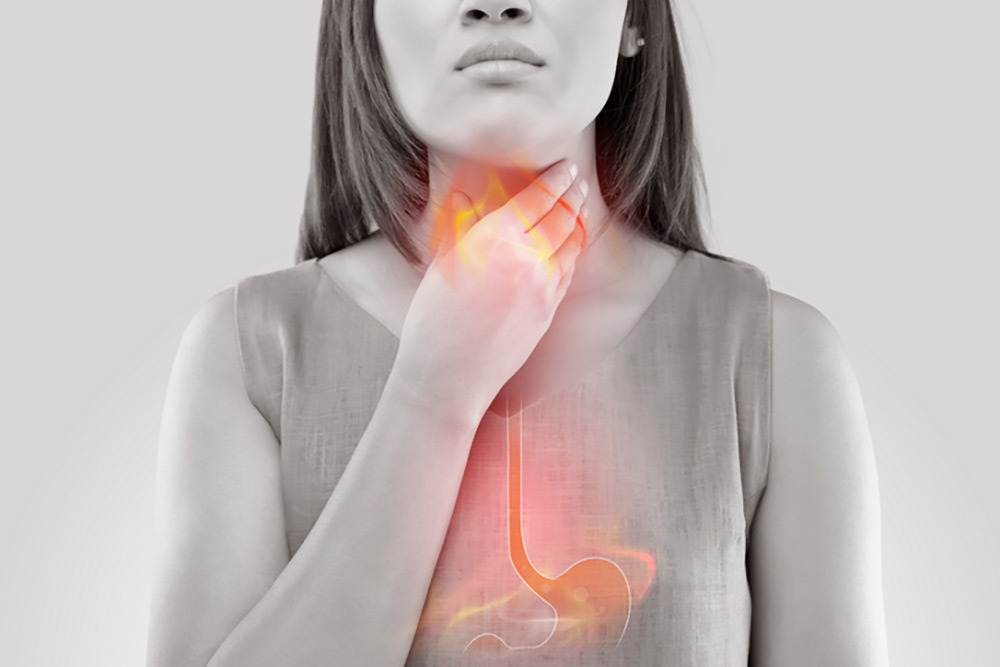
iStock
By Mary Carpenter
LONDON interior designer L.P. had to rearrange her schedule to eat dinner much earlier— to cope with shortness of breath during her daily long walks around London—after getting a diagnosis of acid reflux. Caused by the backflow of stomach contents into the esophagus, acid reflux is usually temporary— “caused by something like overeating or drinking too much coffee,” explains WebMD. But acid reflux can be a precursor to the more serious GERD (gastro-esophageal reflux disorder), and heartburn can be a symptom of both.
Proliferation of ads for Nexium, Prilosec, Prevacid and other proton-pump inhibitors since the early 2000s revealed GERD to be the national disease du jour—while many people use the term interchangeably with acid reflux. According to a 2011 Norwegian study, once-a-week acid reflux rose nearly 50 percent over the first decade of the 21st century—with women the least likely to have acid reflux under age 40, but by ages 60 to 69 becoming the mostly likely sufferers.
The 20% rise in antacid sales at 7-Eleven on the Monday after Super Bowl Sunday reflects the once-a-year “excuse to dig into snacks” —high quantities of chicken wings, pizza and beer, according to Pfizer. Besides heartburn, acid reflux can cause indigestion, also called dyspepsia — that includes burping, stomach bloating and upper belly pain; dysphagia, trouble swallowing; globus sensation, the feeling of a lump in your throat; chronic cough or hoarseness; and bad breath.
“Acid reflux is extremely common and rarely serious [but] don’t ignore your symptoms,” warns WebMD. When stomach acid in the airways makes them contract or narrow, acid reflux symptoms can include shortness of breath and wheezing. And acid reflux can feel similar to the chest pain of a heart attack because the same nerves affect both areas.
Chronic backflow of stomach acid over time damages the lining of the esophagus, which connects the throat and stomach. Over time, acid can weaken the muscular valve, or sphincter that separates the two, allowing stomach acid to flow up the esophagus. Composed partly of hydrochloric acid, stomach acid helps with efficient digestion and protects the stomach against bacteria. But in the esophagus, stomach acid can create painful and irritating inflammation, called esophagitis, and in rare cases leads to more serious problems, including ulcers, and increases the risk of esophageal cancer.
GERD is the diagnosis when acid reflux occurs more than twice a week for several weeks. While symptoms can be similar, they are more intense with GERD—for example, a sore throat that won’t go away or inflammation of the gums and erosion of tooth enamel. According to WebMD, “alarm” symptoms of acid reflux that require medical treatment include difficulty or pain when swallowing, nausea, blood in in vomit or stool, and “hiccups that don’t let up.”
Lifestyle changes, the first line of treatment, start with meals—both timing as related to bedtime and composition to avoid triggers. Advises WebMD, “Don’t lie down for at least two hours after you eat…Use extra pillows or blocks under the head of your bed to raise your head while you sleep.” Another site recommends three hours, and for London interior designer, the magic number was five—to prevent reflux but also to improve brain health, based on the belief that about five hours of dinner digestion must take place before the brain can turn to its restorative work clearing out the day’s detritus.
Food triggers of acid reflux vary from person to person, with the most common being rich food such as meats as well as fats, oils and sweets; fruits, vegetables and juice, especially tomatoes; grains; and beverages, including liquor, coffee and tea. According to WebMD, larger and higher-fat meals “tend to stay in the stomach longer before moving into the small intestine,” which lengthens exposure to stomach acid.
Besides lying down too soon after eating, triggers for acid reflux include increased pressure on the abdomen from wearing tight belts or clothes, and doing too many crunches or sit-ups. Acid reflux is more common in people who smoke, are overweight, or take NSAIDS, such as aspirin and ibuprofen, that irritate the stomach.
For help with acid reflux, antacids can help neutralize stomach acid, while H2-receptor blockers such as Tagamet or Pepcid can reduce stomach acid production. (H2 drugs block the release of the histamine that stimulates stomach cells to release acid and are different from antihistamine drugs that block the H1 receptors involved in allergy reactions.) H2 blockers can also protect against or aid in healing ulcers—which can result from erosion in the mucous barrier that protects the stomach lining.
Over-the-counter drugs from the list above—Prevacid, Prilosec and Nexium—can block acid production while at the same time helping to heal the esophagus. Stronger versions of these drugs are available with a doctor’s prescription. But when GERD symptoms persist, endoscopy —using a small camera attached to a flexible tube down the patient’s throat —can help guide further treatment.
Also using endoscopy—or laparoscopy—a procedure called transoral incisionless fundoplication (TIF) “helps create a new barrier to reflux from the stomach,” according to HopkinsMedicine. “Fundoplication means folding of the fundus, the tissue at the top of the stomach…around the opening between the stomach and the esophagus…which reinforces this area.”
After learning that my occasional shortness of breath might be related to acid reflux, I made a bigger effort to avoid my triggers, notably raw garlic in salads and pastas; carbonated drinks; spicy food; and rich sauces. But no matter what I eat, dining out often requires a pre-bed dose of Pepto-Bismol —which creates a protective coating for the esophagus and stomach and reduces stomach acid. And as for eating dinner earlier, despite my best efforts I often dawdle too long and need an extra pillow to prop for sleeping—sometimes two pillows.
—Mary Carpenter regularly reports on topical subjects in health and medicine.

Thank you mary. I wonder if
susceptibility increases with age.